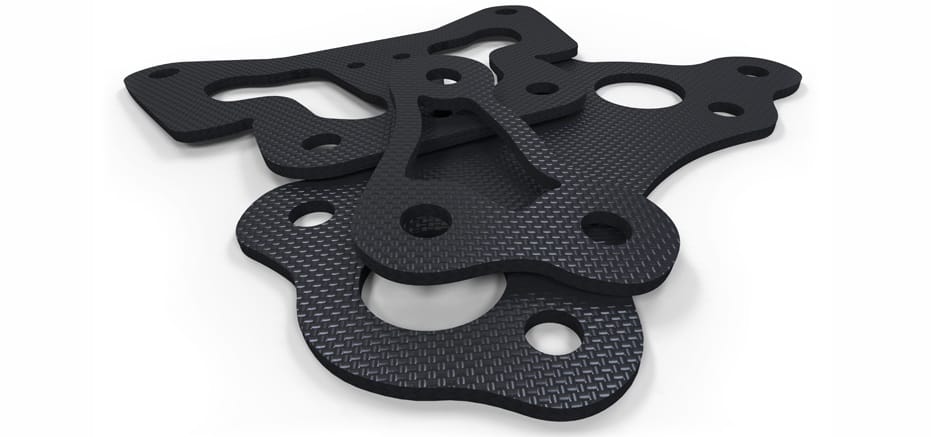Elastomers
Elastomers are organic materials characterized by their ability to deform and then return to their original shape. Natural elastomers have been harvested from trees for centuries and have been used for applications from pencil erasers to car tires. Over the last hundred years, many synthetic elastomers have been developed. The synthetic elastomers are engineered to meet certain needs like wear resistance or chemical compatibility. Laser cutting and engraving are common processes for elastomers. Laser marking is less common. Visit our Materials Suppliers List for elastomer vendors.
Types of Elastomers
- EPDM Rubber
- Latex Rubber
- Low Odor Laser Rubber
- Natural Rubber
- Neoprene™ Rubber
- Nitrile Rubber
- Photopolymers
- Polyethylene Rubber
- Polyurethane Rubber
- SBR Rubber
- Silicone Rubber
- Viton®
Types of Laser Processes
Lasers are playing an ever expanding role in material processing, from new product development to high volume manufacturing. For all laser processes, the energy of a laser beam interacts with a material to transform it in some way. Each transformation (or laser process) is controlled by precisely regulating the wavelength, power, duty cycle and repetition rate of the laser beam. These laser processes include the following:All materials have unique characteristics that dictate how the laser beam interacts and consequently modifies the material. The most common processes for elastomers are the following:
Laser Cutting of Elastomers
The energy of a CO2 laser beam is easily absorbed by most elastomers, causing the material directly in the path of the laser beam to rapidly heat up and vaporize. If the laser power is sufficiently high, the laser beam will cut completely through the material. Most elastomers vaporize quickly when cut with a laser, resulting in smooth and straight edges with minimal heat affected zone.
Laser Engraving of Elastomers
The power of the CO2 laser beam can be limited so that it removes (engraves) material to a specified depth. The laser engraving process can be used to create intricate patterns and designs in the elastomer surface.
Laser Marking of Elastomers
For some elastomers, like silicone, a Fiber laser can be used to create a visible mark without removing material. However the mark is faint. Therefore the laser engraving process is used more commonly for applying a part number or other identifying mark to elastomers.
Combined Processes
The laser cutting and engraving processes described above can be combined without having to move or re-fixture the elastomer.
General Elastomer Laser System Considerations
Platform Size – Must be large enough to hold the largest pieces of elastomer that will be laser processed or be equipped with Class 4 capability for processing larger pieces.
Wavelength – The 10.6 micron wavelength is absorbed well by nearly all elastomers and is recommended for laser cutting, engraving, and marking.
Laser Power – Must be selected based on the processes that will be performed. 50 to 150 Watts (CO2 laser) is best for elastomer laser cutting and engraving. Less than 50 Watts will yield poor productivity. Higher laser power will provide faster laser cutting and engraving.
Lens – A 2.0 lens is the best general process lens for elastomer laser material processing.
Exhaust – Must have sufficient flow to remove the gasses and particles that are generated during the laser process from the elastomer laser cutting, engraving, and marking equipment.
Air Assist – Provides a jet of air near the focal point of the laser to help remove gasses and particles that are generated during elastomer laser cutting and engraving.
Environmental, Health and Safety Considerations for Elastomer Laser Material Processing
Laser-material interactions almost always create gaseous effluent and/or particles. The effluent from elastomer laser cutting and engraving will include various volatile organic compounds (VOCs) and should be routed to an exterior environment. Alternatively it may be treated with a filtration system first and then routed to an exterior environment. Elastomer combustion is inherent to laser processing and may produce flames. Therefore elastomer laser material processing should always be supervised.

